My first interviews with artisans are set around the traditional start of the Silk Route: Xian, the capital of Shaanxi Province. Many thanks to Wang Gang (Sabrina) for giving me a wonderful book on the region’s crafts, and to Sarah for setting out on the first travels with me. Below is the first of the series on Shaanxi Province.
 Episode 1: Light and Shadow
Episode 1: Light and ShadowSpeeding on the highway in northern China, the countryside is all alike – an endless colorless plain of dust, a wasteland carved out and worn down by centuries of use and decades of madness. It is a torn blistered land aching for green. It is hard to imagine that this was the soul and heart of ancient China, the wide fertile plain of the mighty Yellow River, the homeland of the Zhou dynasty, the capital of the Tangs, the majesty of the terracotta soldiers.
Today there is a soporific rhythm to the countryside, a suspended grayness in which everything is both luminous and without detail. Here time decelerates, expands and is lost, as if endlessly refracted in clouds of dust and smoke: an impenetrable, yet somehow curiously welcoming prism. It is as if all of the sudden the land will erupt with color and noise. It feels like anything can happen.
 “Shadow puppet” is a misleading name. Viewed through a white screen illuminated from behind, the puppets are not just shadows, but colorful and sharp transparency. Carved from thin translucent cow or donkey-hide the puppet’s shapes are refined and their color bright and visible through the screen. If the puppet player moves his figurines away from the cotton screen, only then does the puppet become a shadow, a fuzzy indistinct shape.
“Shadow puppet” is a misleading name. Viewed through a white screen illuminated from behind, the puppets are not just shadows, but colorful and sharp transparency. Carved from thin translucent cow or donkey-hide the puppet’s shapes are refined and their color bright and visible through the screen. If the puppet player moves his figurines away from the cotton screen, only then does the puppet become a shadow, a fuzzy indistinct shape.  The skill of the puppet player is many-fold. He (because all the puppet-players we hear of and meet are men) must not only learn how to manipulate the puppets, but must also memorize the songs and rhythm of about 60 plays – which can each last up to three hours. It is an act of coordination and practice. For optimum effect, the movements of the puppets must coincide with the bang, bust and lulls of the energetic opera-like singing that accompanies the play. In a battle scene, for example, the punches and sword thrusts of the puppet warrior must be synchronized with the yelps and screams of the musicians. All this, while handling multiple puppets and characters.
The skill of the puppet player is many-fold. He (because all the puppet-players we hear of and meet are men) must not only learn how to manipulate the puppets, but must also memorize the songs and rhythm of about 60 plays – which can each last up to three hours. It is an act of coordination and practice. For optimum effect, the movements of the puppets must coincide with the bang, bust and lulls of the energetic opera-like singing that accompanies the play. In a battle scene, for example, the punches and sword thrusts of the puppet warrior must be synchronized with the yelps and screams of the musicians. All this, while handling multiple puppets and characters. 
We have come to Huaxian, the supposed birthplace of shadow puppets, about 80 miles east of Xian in this year’s mild mid-winter to seek out Mr. Wei. Sarah had heard of his talent through a French friend and puppeteer, Jean-Luc Penso. The strapping and burly Jean-Luc (Mr. Wei’s description) studied puppetry in Taiwan, living with his master for several years before returning to France to start his own troupe, “Le Theatre du Petit Mirror” in the Parisian suburb of Issy-les-Moulineaux. Jean-Luc later also studied with Mr. Wei for several months in Huaxian – and his boots and bicycle are still in Mr. Wei’s courtyard awaiting his return.
Sarah Oppenheim, my travel partner, is a petite French woman with a fierce character. Working on her masters in Chinese theatre, she is also learning the art of puppet play in Beijing. Rehearsing every day with her troupe members in a run-down shack huddled around a coal oven, she is learning how to “walk” her puppets. To learn the art of Dongbei puppets (from Northeastern China), her master insists that she needs to “walk” her puppet for at least one year to gain the dexterity of a professional. There are many walks he claims: a calm and serene character must have a slow stride, like deep breathing, up and down, slow and steady. A clown however, must be in constant movement, his head bobbing up and down, tripping occasionally – ready to make the crowd laugh. Sarah’s master insists that she can be initiated to other puppet movements, only after learning all the walks. From her almost four months of daily practice, Sarah has calloused hands and a protruding new thumb muscle. She is fed up with “walking”.
Mr. Wei laughs at Sarah when she tells him what she is learning, and says that in Beijing people are too caught up on details He tells us that it only takes a month to learn the basic puppet techniques of the Huaxian shadow play and only about one year with the troupe to learn multiple dramas and most of the techniques. In past decades this apprenticeship took longer as most people were analphabet, and had to memorize the words and music for each play, which could take around three years. Sarah is excited to learn about today’s accelerated learning and Mr. Wei invites her to study with the troupe this spring. One month of study to become an ambulant puppet player. Sounds enchanting.
 A Family Tradition
A Family TraditionWei Jin Quan comes from a long line of shadow puppet players. His grandfather and father were both part of puppet troupe orchestras and are still remembered throughout the county for their deep resonant voices. Today, Mr. Wei is the leader of Huaxian’s Guang Hua Shadow Play Troupe, made famous by Zhang Yimou’s movie “To Live”. Although he is the youngest in the troupe, Mr. Wei is the only troupe member who has learned all the skills involved in the shadow play: instrument playing, singing, performing, carving and painting the puppets and transcribing the plays. He is the renaissance man of the puppet world.
 Sarah and I meet Mr. Wei in the new residence his puppet troupe has been awarded by the Huaxian government. The government is finally recognizing the importance of this 2,000 year old art-form, and clumsily attempting to help it survive. The troupe is housed on the outskirts of the city within a former military compound that has been converted into a school. The troupe has a large empty courtyard with single-story cement barracks on three sides. The rooms inside are at least five degrees colder than outside, so Sarah and I occasionally sneak out to go to smoke a cigarette in the sunlight - warming up in the winter sun. There are fragrant trees planted in the dry earth along the main barrack and this place seems blissful and quiet. The sound of a student’s music rehearsing in an adjacent barrack enhances the magic. The troupe’s wrinkled and grouchy erhu player sits on the barrack steps and watches us talk, counting time with the cigarettes he inhales.
Sarah and I meet Mr. Wei in the new residence his puppet troupe has been awarded by the Huaxian government. The government is finally recognizing the importance of this 2,000 year old art-form, and clumsily attempting to help it survive. The troupe is housed on the outskirts of the city within a former military compound that has been converted into a school. The troupe has a large empty courtyard with single-story cement barracks on three sides. The rooms inside are at least five degrees colder than outside, so Sarah and I occasionally sneak out to go to smoke a cigarette in the sunlight - warming up in the winter sun. There are fragrant trees planted in the dry earth along the main barrack and this place seems blissful and quiet. The sound of a student’s music rehearsing in an adjacent barrack enhances the magic. The troupe’s wrinkled and grouchy erhu player sits on the barrack steps and watches us talk, counting time with the cigarettes he inhales.
Inside, in his room, Wei Jin Quan is excitedly pulling puppets out of every niche and corner. He pulls them out of drawers, his wooden chest, his closet, and in a final comedic gesture lifts up his mattress to reveal more puppets hidden there. His life is peopled by painted emperors and goddesses, ghosts and goblins. He has at least 100 puppets scattered throughout the formerly barren room. Against the white wall, he shows Sarah some “moves” for a battle scene. He is proud and happy – this is his passion on display. This abundance of figurines however, is but the tip of the iceberg - for the troupe’s repertoire of more than 50 plays, Mr. Wei regularly uses 100 puppet-bodies onto which he can add the 300 to 400 heads of different characters.
Later that afternoon we drive to Mr. Wei’s house in the village of Jiang Cun Dong, 45 minutes south of Huaxian. There, he continues to pull out hundreds of puppets from the thousands that he has saved and collected throughout the years. He lays down piles of puppets on the ground and returns to his chest to dig more out. He was able to buy many of the puppets from other troupes around the county before they disappeared. He also bought antique Ming and Qing dynasty pieces as well as old scripts from old-timers in surrounding villages. We hold the puppets against the light of the open door and his home becomes an unexpected theatre, alive with color and stories.

 Any of the old imperial, superstitious, or feudal dramas were trashed - literally. Mr. Wei says that many of his father’s spirit puppets for the traditional ghost dramas were destroyed. He has not been able to recreate them as he does not have any pictures or diagrams of those puppets. Some plays have thus been lost – but this is perhaps the normal advance of time and history? Some stories stay and are retold, others are lost to time and memory.
Any of the old imperial, superstitious, or feudal dramas were trashed - literally. Mr. Wei says that many of his father’s spirit puppets for the traditional ghost dramas were destroyed. He has not been able to recreate them as he does not have any pictures or diagrams of those puppets. Some plays have thus been lost – but this is perhaps the normal advance of time and history? Some stories stay and are retold, others are lost to time and memory. Craft and Commerce
Wei Jin Quan shows us a series of 70 puppets that he recently made for a play called “Nao Shi” or “Effervescent Market” – it is a parade of animals, people and activity. He tells us that he can make a set for us for about 2,000 Euros, a cheap price for a year’s work. The Nao Shi play takes only 20 minutes to perform, but is a lively ballad and ode to the Chinese love of renao: activity and bustle.
 To craft his puppets, Mr. Wei uses many traditional techniques, including the use of a thicker cowhide, which makes the puppets more easily maneuverable. He laments the fact that today’s paint is not as beautiful as the natural plant-derived dyes they used in older days, but says that he does not have the time or the knowledge to paint the puppets in this way. He tries nonetheless to use high quality paints, which capture light and create the magic of the shadow play. Beyond crafting all the puppets used by his own troupe, Wei Jin Quan also carves puppets for Jean-Luc, the French puppeteer, following the designs sent to him by Jean-Luc.
To craft his puppets, Mr. Wei uses many traditional techniques, including the use of a thicker cowhide, which makes the puppets more easily maneuverable. He laments the fact that today’s paint is not as beautiful as the natural plant-derived dyes they used in older days, but says that he does not have the time or the knowledge to paint the puppets in this way. He tries nonetheless to use high quality paints, which capture light and create the magic of the shadow play. Beyond crafting all the puppets used by his own troupe, Wei Jin Quan also carves puppets for Jean-Luc, the French puppeteer, following the designs sent to him by Jean-Luc.
 While the traditional art form is dying, the economy behind the craft is taking off. Puppets are on sale in every souvenir shop from Xian to Shanghai and are a common site at Beijing’s Panjianyuan antique market. Ironically, Huaxian County has recently been named the heartland of China’s shadow puppets – a label that may be powerful enough to secure a higher price for the county’s souvenir exports, but may not be enough to save the shadow play from disappearance.
While the traditional art form is dying, the economy behind the craft is taking off. Puppets are on sale in every souvenir shop from Xian to Shanghai and are a common site at Beijing’s Panjianyuan antique market. Ironically, Huaxian County has recently been named the heartland of China’s shadow puppets – a label that may be powerful enough to secure a higher price for the county’s souvenir exports, but may not be enough to save the shadow play from disappearance.An Uncertain Future
Puppet troupes were once very active, playing almost every day throughout the Shaanxi countryside. Before the Cultural Revolution, Mr. Wei tells us that there were 46 shadow puppet troupes in Huaxian County, with ample work available for each troupe to play every day of the year. After the Cultural Revolution during which time many puppets were destroyed and troupes dismantled, only 10 troupes remained. However, Mr. Wei recalls that in the early 1980’s they were still extremely busy, playing every day without pause or rest. In the mid to late 80’s however, this changed abruptly. Today the three troupes remaining in Huaxian County are lucky to play once a week and all await the Spring Festival to feel the adrenaline and activity of former days. Mr. Wei explains that every since the television entered village life, young people are no longer interested in the shadow plays. The young he says, have a thirst for the outside world and modernity, and would rather watch TV, play video games or go on-line. Shadow puppets no longer provide the excitement and entertainment they were once sought out for. In Heyang County north of Huaxian, the same inactivity weighs on puppeteers, and only two troupes of a former 80 remain active.
Despite these somewhat depressing conditions, Wei Jin Quan remains optimistic and unremittingly happy. He loves his art and is passionate about puppets. When I ask him about the fragile future of shadow play, he answers decisively, bu shi wo de shi – that’s not my concern. He can not single-handedly fight the changes in the world – puppets are a small country next to the empires of TV and Hollywood entertainment. Mr. Wei loves his work, and is happy to take on apprentices and students, but this is perhaps not enough to change the course of his craft’s disappearance. The troupe currently has no students studying puppetry – no one is interested in this art form, he says, people want to go to the big cities and dream of lucrative careers. However, despite its lack of popularity among the young, the troupe did recently recruit one 30 year old student to study puppet play music. The student still works part time in a government job.
 Despite his apparent nonchalance about the future of his craft, Mr. Wei remains a non-proclaimed ambassador for shadow play. He has been invited to perform all over China, and has brought his troupe as far as Germany and France. He says, however that these performances will not help ensure the future of the drama form. As of yet, no one is assuring the next generation of puppeteers. According to Mr. Wei, more people abroad know about traditional Chinese puppetry than the Chinese. Maybe, he says these foreigners will return to China to teach puppetry to future generations. Globalization come full circle?
Despite his apparent nonchalance about the future of his craft, Mr. Wei remains a non-proclaimed ambassador for shadow play. He has been invited to perform all over China, and has brought his troupe as far as Germany and France. He says, however that these performances will not help ensure the future of the drama form. As of yet, no one is assuring the next generation of puppeteers. According to Mr. Wei, more people abroad know about traditional Chinese puppetry than the Chinese. Maybe, he says these foreigners will return to China to teach puppetry to future generations. Globalization come full circle?  Perhaps this journey can be productive, infusing the craft with new ideas and talent, enabling it change, adapt, and evolve with the world? Indeed, shadow play has already evolved in many ways during Mr. Wei’s own lifetime, adapting to technology and changing for example from the use of oil lamps, to gas lamps, to today’s electric lamps.
Perhaps this journey can be productive, infusing the craft with new ideas and talent, enabling it change, adapt, and evolve with the world? Indeed, shadow play has already evolved in many ways during Mr. Wei’s own lifetime, adapting to technology and changing for example from the use of oil lamps, to gas lamps, to today’s electric lamps.










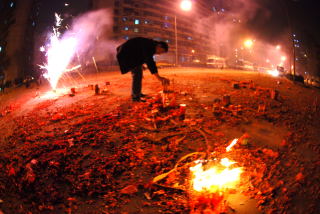
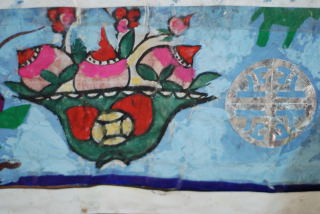

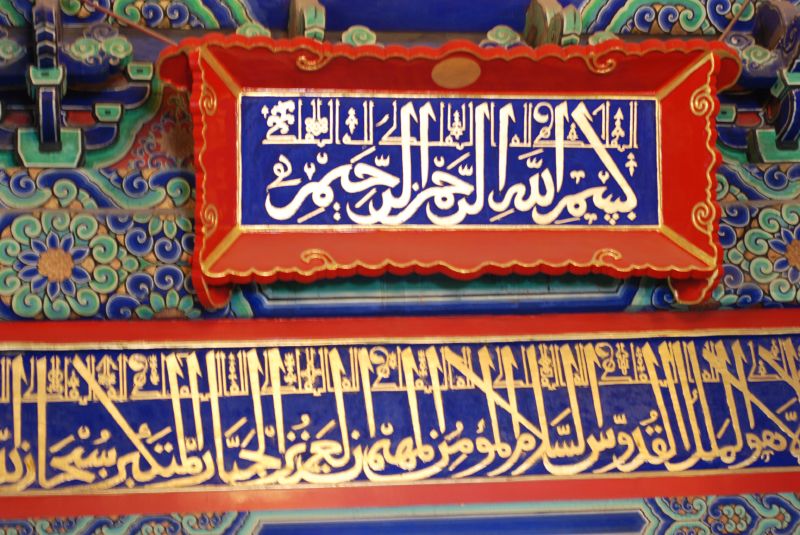

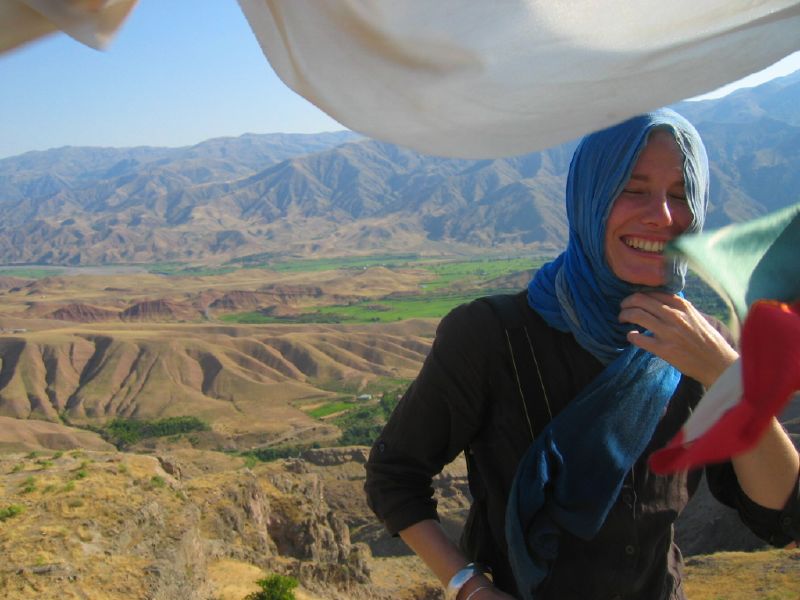
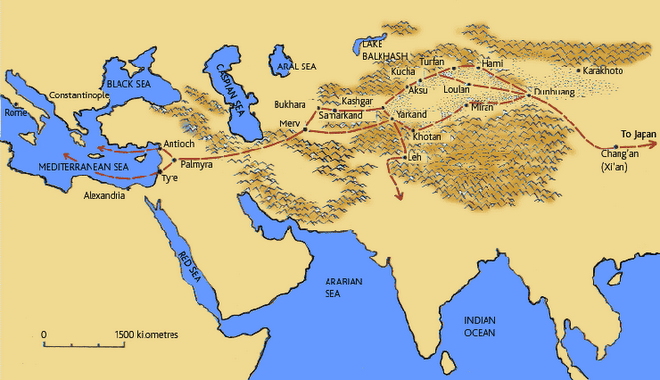
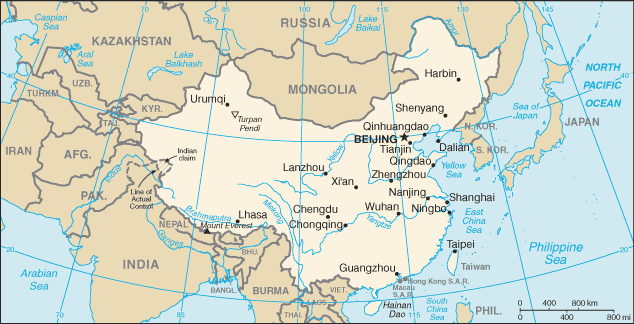
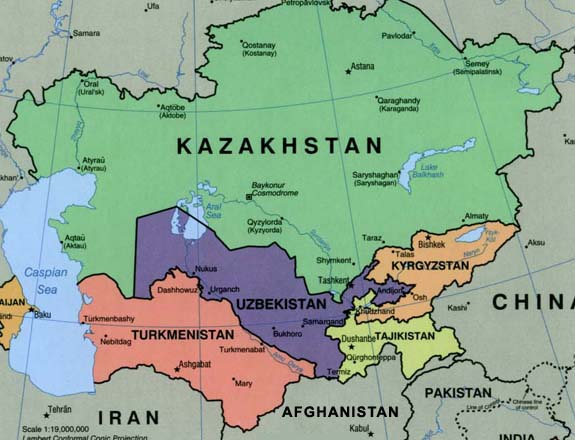
No comments:
Post a Comment